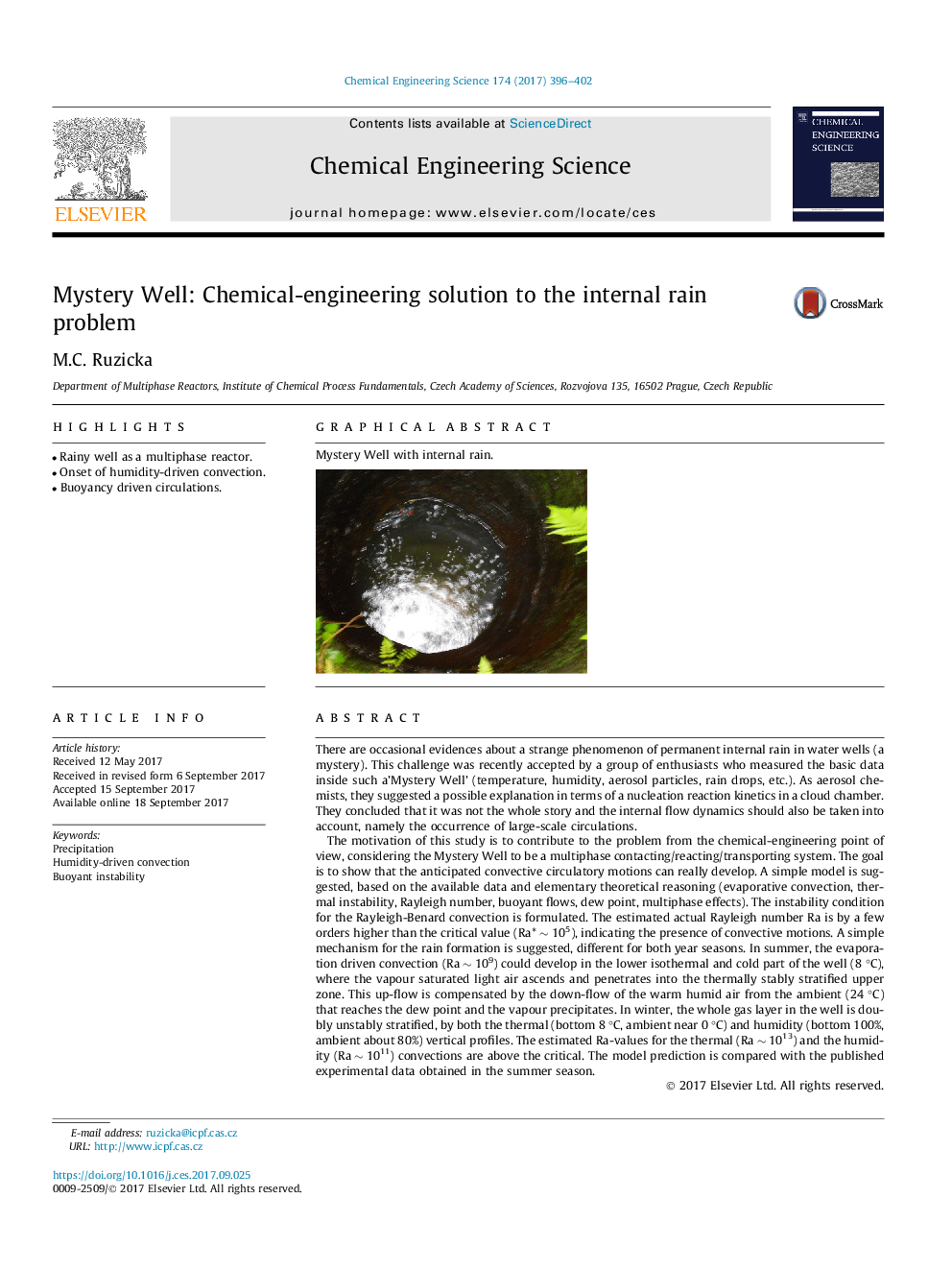| Article ID | Journal | Published Year | Pages | File Type |
|---|---|---|---|---|
| 6466919 | Chemical Engineering Science | 2017 | 7 Pages |
â¢Rainy well as a multiphase reactor.â¢Onset of humidity-driven convection.â¢Buoyancy driven circulations.
There are occasional evidences about a strange phenomenon of permanent internal rain in water wells (a mystery). This challenge was recently accepted by a group of enthusiasts who measured the basic data inside such a'Mystery Well' (temperature, humidity, aerosol particles, rain drops, etc.). As aerosol chemists, they suggested a possible explanation in terms of a nucleation reaction kinetics in a cloud chamber. They concluded that it was not the whole story and the internal flow dynamics should also be taken into account, namely the occurrence of large-scale circulations.The motivation of this study is to contribute to the problem from the chemical-engineering point of view, considering the Mystery Well to be a multiphase contacting/reacting/transporting system. The goal is to show that the anticipated convective circulatory motions can really develop. A simple model is suggested, based on the available data and elementary theoretical reasoning (evaporative convection, thermal instability, Rayleigh number, buoyant flows, dew point, multiphase effects). The instability condition for the Rayleigh-Benard convection is formulated. The estimated actual Rayleigh number Ra is by a few orders higher than the critical value (Ra* â¼ 105), indicating the presence of convective motions. A simple mechanism for the rain formation is suggested, different for both year seasons. In summer, the evaporation driven convection (Ra â¼Â 109) could develop in the lower isothermal and cold part of the well (8 °C), where the vapour saturated light air ascends and penetrates into the thermally stably stratified upper zone. This up-flow is compensated by the down-flow of the warm humid air from the ambient (24 °C) that reaches the dew point and the vapour precipitates. In winter, the whole gas layer in the well is doubly unstably stratified, by both the thermal (bottom 8 °C, ambient near 0 °C) and humidity (bottom 100%, ambient about 80%) vertical profiles. The estimated Ra-values for the thermal (Ra â¼Â 1013) and the humidity (Ra â¼Â 1011) convections are above the critical. The model prediction is compared with the published experimental data obtained in the summer season.
Graphical abstractMystery Well with internal rain.Download high-res image (172KB)Download full-size image
